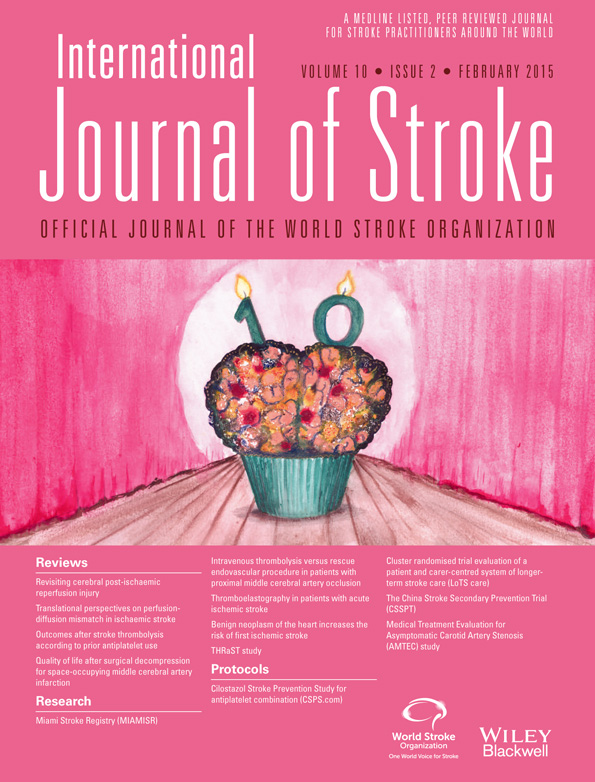Prevalence of vertebral artery origin stenosis in a multirace-ethnic posterior circulation stroke cohort: Miami Stroke Registry (MIAMISR)
Abstract
Background
Vertebral artery origin stenosis is an important etiology for stroke in the posterior circulation. Data from the Oxford Vascular Study and New England Registry show a prevalence of vertebral artery origin disease of 26–32%. These populations are largely comprised of Caucasians. The prevalence of vertebral artery origin disease in multirace-ethnic stroke population is unknown.
Aim
The study aims to assess the prevalence of vertebral artery origin stenosis in a multirace population with posterior circulation stroke.
Design/Methods
The Miami Stroke Registry is a prospective registry which offers enrollment to consecutive patients admitted with a diagnosis of stroke/transient ischemic attack. Baseline demographics, vascular risk factors, and stroke topography in the posterior circulation were analyzed. All vascular imaging studies were reviewed for the presence of vertebral artery origin stenosis, and stroke etiology was adjudicated by TOAST classification.
Results
Mean age of the population was 63 ± 13 years; 149 (70%) were men. Among cases, 123 were Hispanic (58%), almost one third 70 (32%) were of African descent, and 15 (7%) were white. The most common stroke etiology was small vessel occlusion (27%), followed by large artery intracranial disease 25% (posterior cerebral arteries, basilar and vertebral arteries), cardioembolic 19%, and cryptogenic 16%. Vertebral artery origin stenosis/occlusion was present in 28 (13·1%) patients, of whom only 2 (0·9%) were bilateral; it was attributed as the direct cause of stroke in 11 (5·2%) patients.
Conclusions
We found a lower prevalence of vertebral artery origin stenosis in a predominately non-white population with posterior circulation stroke than previously reported. Vertebral artery origin stenosis was a direct cause of posterior circulation stroke in only 5·2% of patients.




